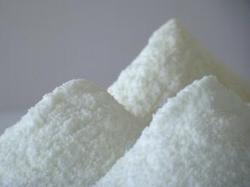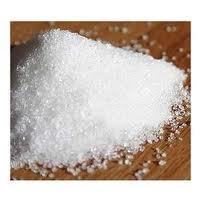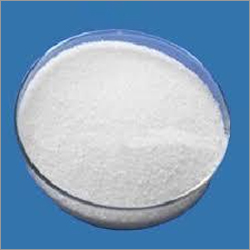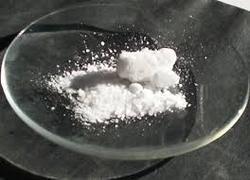Lactose Chemical
Lactose Chemical Specification
- Smell
- Odorless
- CAS No
- 63-42-3
- Appearance
- White powder
- EINECS No
- 200-559-2
- Poisonous
- Non-poisonous
- Shape
- Crystalline
- Shelf Life
- 2 years
- Usage
- Diluent in tablets and capsules, sweetener, culture media
- HS Code
- 1702.11
- Taste
- Slightly sweet
- Molecular Formula
- C12H22O11
- Application
- Used in pharmaceutical formulations, food and beverage industry, laboratory reagent
- Physical Form
- Powder
- Ingredients
- Lactose monohydrate
- Properties
- White crystalline solid, odorless, slightly sweet taste, stable under ordinary conditions
- Melting Point
- 202C
- Ph Level
- Neutral (6.0 - 7.0)
- Storage
- Store in cool, dry place, tightly closed container
- Grade
- Pharmaceutical Grade
- Refractive Rate
- nD 20 1.554
- Density
- 1.525 Gram per cubic centimeter(g/cm3)
- Structural Formula
- See image for structural formula
- Solubility
- Soluble in water
- Molecular Weight
- 342.30 g/mol
- Purity
- 99% min
- Product Type
- Chemical
Lactose Chemical Trade Information
- Minimum Order Quantity
- 25 Kilograms
- Payment Terms
- Letter of Credit (L/C), Western Union, Paypal, Cash in Advance (CID), Cash Advance (CA)
- Supply Ability
- 500 Kilograms Per Week
- Delivery Time
- 7 Days
- Sample Available
- Yes
- Sample Policy
- Sample costs shipping and taxes has to be paid by the buyer
- Main Export Market(s)
- Australia, South America, Western Europe, Middle East, Central America, Asia, Eastern Europe, North America, Africa
- Main Domestic Market
- All India
About Lactose Chemical
Lactose is a disaccharide sugar derived from galactose and glucose that is found in milk. Lactose makes up around 28% of milk (by weight), although the amount varies among species and individuals, and milk with a reduced amount of lactose also exists. It is extracted from sweet or sour whey. The name comes from lac orlactis, the Latin word for milk, plus the -ose ending used to name sugars. It has a formula of C12H22O11.
Lactose is not added directly to many foods, because its solubility is less than other sugars commonly used in food. Infant formula is a notable exception, where the addition of lactose is necessary to match the composition of human milk.
Specification
| Density | 940 kg/m3 |
| Packaging Type | Packet |
| Color | White |
| Formula | C5H8O2 |
| Density | 940 kg/m3 |
| Packaging Type | Packet |
| Color | White |
| Formula | C5H8O2 |
Superior Pharmaceutical Grade Quality
Our lactose, complying with USP standards, is pharmaceutical grade with a minimum purity of 99%. Carefully processed via crystallization from high-quality whey, it ensures superior performance in pharmaceutical formulations and food applications. Its microbial, heavy metal, and moisture specifications align with global pharmacopeial regulations, guaranteeing a safe and effective ingredient for diverse applications.
Versatile Applications Across Industries
Lactoses stable, odorless, and slightly sweet profile allows its use as a diluent in tablets and capsules, sweetener in food and beverages, and as a medium for microbial culture in laboratories. Its excellent solubility and compatibility make it essential in pharmaceutical preparations, as well as a preferred choice for academic and industrial research applications.
Safe Packaging and Storage for Optimal Shelf Life
Packed securely in HDPE bags with an inner liner, lactose maintains its integrity during storage and transport. To ensure maximum shelf life of up to 2 years, it should be stored in a cool, dry place within tightly closed containers. The product is non-hazardous and non-poisonous, supporting easy handling and safe logistics worldwide.
FAQs of Lactose Chemical:
Q: How is lactose (milk sugar) manufactured?
A: Lactose is produced by crystallization from whey, a by-product of milk processing. The process involves isolating whey, concentrating it, and then crystallizing lactose from the solution. The resulting crystals are filtered, washed, and dried to obtain high-purity pharmaceutical-grade lactose.Q: What are the primary applications and usage benefits of this lactose?
A: This lactose serves as a diluent in tablets and capsules, a sweetener in food and beverages, and a culture media ingredient in laboratories. Its high solubility, neutral taste, and compliance with global quality standards make it highly beneficial for consistent formulation and product stability.Q: When should lactose be used in pharmaceutical formulations?
A: Lactose is ideal for use as a filler or binder in tablet and capsule manufacturing due to its purity, stability, and compatibility with active pharmaceutical ingredients. It helps ensure uniformity, ease of processing, and the desired release characteristics of medicinal products.Q: Where is this lactose sourced and exported from?
A: This lactose is manufactured and supplied in India by reputable exporters, importers, and suppliers, with extensive distribution for both domestic and global markets in compliance with applicable regulations.Q: What packaging options are available and how should lactose be stored?
A: Lactose is available in 25 kg and 50 kg HDPE bags with an inner liner for moisture protection. It should be stored in a cool, dry place in tightly closed containers to maintain quality and prolong shelf life up to two years.Q: Is this lactose suitable for people with allergies?
A: This product contains lactose derived from milk and is not suitable for individuals with milk or lactose allergies. Allergen information should be carefully reviewed before use.

Price:
- 50
- 100
- 200
- 250
- 500
- 1000+
More Products in Chemicals Powders Category
Butylated Hydroxytoluene (BHT)
Price 375 INR
Minimum Order Quantity : 25 Kilograms
Grade : Food Grade / Technical Grade
Purity : 99% min
Physical Form : Powder
Storage : Other, Store in cool, dry, wellventilated area away from sunlight and oxidizing agents
Caustic Potash Flake
Price 75 INR
Minimum Order Quantity : 25 Kilograms
Grade : Industrial Grade
Purity : Min. 90% KOH
Physical Form : Other, Flake
Storage : Other, Store in tightly closed container, dry, cool, ventilated area. Protect from humidity and CO2.
Isophthalic Acid
Price 165 INR
Minimum Order Quantity : 1 Kilograms
Grade : Technical Grade
Purity : 99%
Physical Form : Powder
Storage : Room Temperature
Iodide Powder
Price 50000 INR / Kilograms
Minimum Order Quantity : 25 Kilograms
Grade : For Industrial
Purity : 99%
Physical Form : Powder
 English
English Spanish
Spanish French
French German
German Italian
Italian Chinese (Simplified)
Chinese (Simplified) Japanese
Japanese Korean
Korean Arabic
Arabic Portuguese
Portuguese Send Inquiry
Send Inquiry




 Send Inquiry
Send Inquiry Send SMS
Send SMS Call Me Free
Call Me Free
